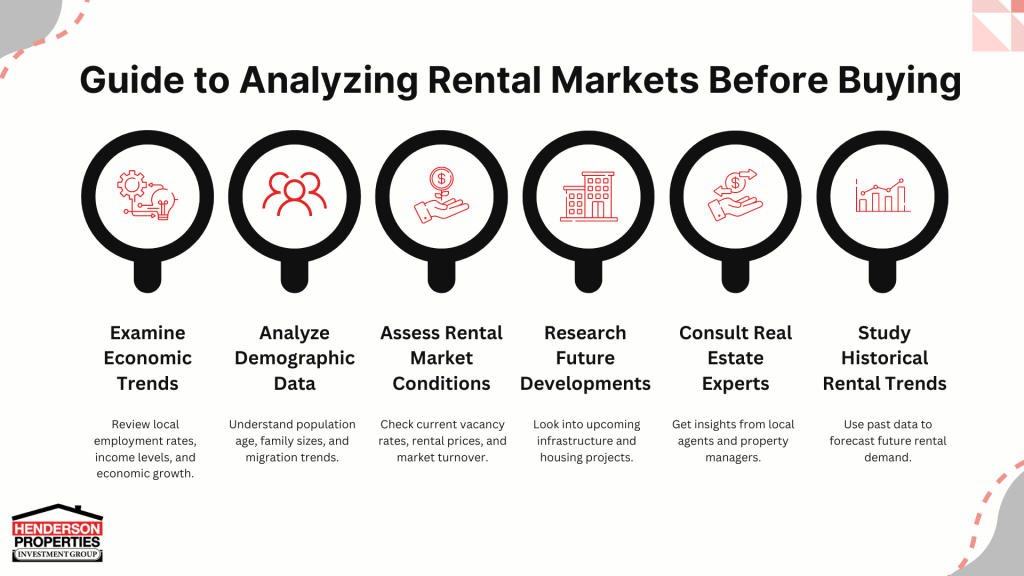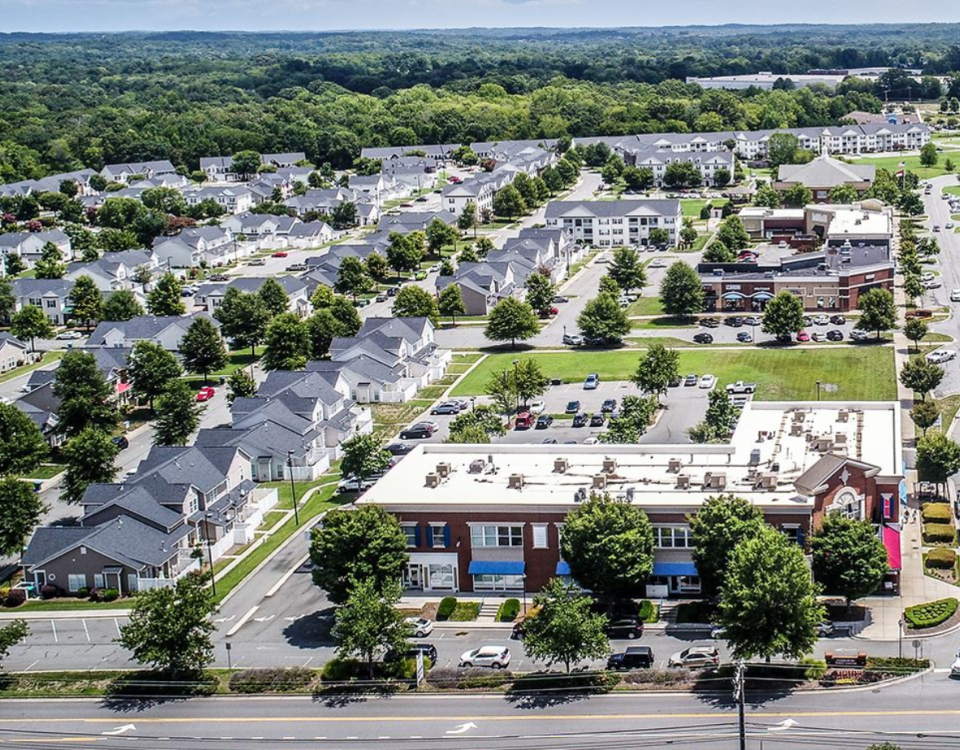
Investing in Real Estate Is Easier Than You Think
March 20, 2024
Real Estate in Belmont, NC
April 29, 2024Rental Demand Defined
Rental demand refers to the level of interest and need for rental properties in a specific area. Understanding rental demand is crucial for real estate investors as it directly affects profitability. High rental demand indicates a strong market where properties are likely to be rented quickly and potentially at a higher rate, reducing the risk of vacancies and increasing income stability.
Key indicators of high rental demand include a high occupancy rate, rising rental prices, a low number of days on the market, and strong population growth, which signal a robust rental market.
Recognizing these indicators helps investors decide where to purchase properties to maximize their returns. Learn more about analyzing these indicators.
Market Research for Rental Properties
Effective market research utilizes various tools and resources, such as real estate platforms like Zillow, Realtor.com, and local MLS databases, which provide comprehensive data on rental prices, property values, and market dynamics. Additionally, local government reports can offer insights into demographic shifts, economic growth, and planned developments that affect the rental market.
Engaging with local real estate agents and property managers can also yield valuable firsthand information about specific neighborhoods’ rental demand and competitiveness.
These combined resources enable investors to analyze the current market state, forecast future trends, and identify lucrative investment opportunities.

Analyzing Demographic Trends
Understanding demographic data helps predict which types of rental properties will be most in demand and ensure that investments align with market needs, enhancing profitability and reducing vacancy risks.
Here are some critical factors to consider:
- Age Distribution: Examining the population’s age structure in different Carolina regions can significantly influence investment decisions. For instance, areas with a higher concentration of young adults and professionals might have a greater demand for studio and one-bedroom apartments, particularly in urban centers like Charlotte and Durham. Conversely, regions with more families or older populations might see higher demand for larger homes or properties with accessibility features.
- Population Growth: Areas experiencing rapid growth, such as the Research Triangle or fast-developing suburbs around major cities, are hotspots for rental demand. A growing population often leads to increased demand for housing, driving up rental rates and reducing vacancy periods. Keeping an eye on future population growth forecasts can also provide insights into long-term rental demand trends, making it a valuable strategy for timing investment purchases.
- Employment Rates: Employment stability and the presence of major employers, such as universities, technology companies, and healthcare facilities, can create strong demand for nearby residential rentals. Areas with robust job markets tend to attract and retain more residents, maintaining consistent rental demand. For example, cities like Fort Mill and Charlotte, known for their strong economic bases and numerous employment opportunities, typically exhibit strong rental markets.
Evaluating Local Economic Health
A strong local economy, characterized by a flourishing job market, frequent new business openings, and substantial government investments in infrastructure, attracts a steady incursion of workers and families seeking long-term residence, increasing the need for rental properties. Such indicators suggest a sustainable demand for housing, as employment opportunities ensure a steady income stream for renters and promote overall economic stability, making the area more attractive for both living and investing.
By assessing these economic factors, real estate investors can predict rental properties’ potential success and profitability in specific locales.
Investigating Local Rental Market Conditions
By examining current and historical rental prices and vacancy rates, investors can identify trends that signal either market saturation or potential for growth. For instance, a low vacancy rate and steadily increasing rental prices typically indicate strong demand and limited supply, suggesting a favorable investment climate.
Conversely, high vacancy rates and stagnant or declining rental prices may indicate an oversupply or decreasing demand, warning investors of potential risks.
This analysis helps investors decide on property acquisitions, pricing strategies, and marketing approaches to optimize their rental yield and minimize vacancies.
Price-to-Rent Ratio
Assessing the price-to-rent (PTR) ratio is an analysis tool for real estate investors. It provides crucial insights into the relative affordability of buying versus renting homes in a specific market. This ratio serves as a gauge for determining whether it’s more financially sensible for individuals to rent or buy in a particular area, and it plays a significant role in guiding investment strategies focused on residential properties.
Here are some important things to know about it:
- The PTR ratio compares the median home price in a region to the median annual rent charged for similar properties. It provides a straightforward snapshot of housing market dynamics and affordability.
- To determine this ratio, divide the median price of homes currently listed for sale in the area by the median annual rent for comparable properties. The median yearly rent is calculated by multiplying the median monthly rent by 12. This calculation yields the PTR ratio, quantifying the cost-effectiveness of renting versus buying.
- The PTR ratio can significantly influence real estate investment decisions. A lower PTR ratio suggests that purchasing properties might be more economical than renting, indicating a favorable market for investors looking to buy and sell properties at a profit. Conversely, a higher PTR ratio (above 20) signals that renting is more financially viable than buying, indicating robust rental demand and a potent market for rental property investments.
Legal Things To Consider
Zoning laws dictate what types of buildings can be constructed or how properties can be used in specific areas, significantly influencing the type and scope of investments feasible in a given location. Additionally, rent control policies and other tenant protections can affect profitability by limiting the amount landlords can charge for rent and the conditions under which tenants can be evicted.
These regulations can also influence rental demand by making rental properties more or less attractive to potential tenants, depending on the perceived stability and affordability enforced by local laws. Therefore, investors must stay informed about these legal aspects to align their investment strategies with current regulations and market conditions, ensuring compliance and optimizing their investment potential.
Need An Investor-Friendly Real Estate Agent?
Henderson Investment Group is a premier choice for real estate investors, offering over 35 years of expertise in helping clients find, acquire, renovate, manage, and profit from strategic rental properties. Our comprehensive, turnkey solutions are tailored to maximize investor profitability, supported by cutting-edge real estate technology that simplifies property selection and management.
Henderson ensures a seamless, profitable investment experience, whether starting or scaling up. Find out how easy it really is and create an account!







